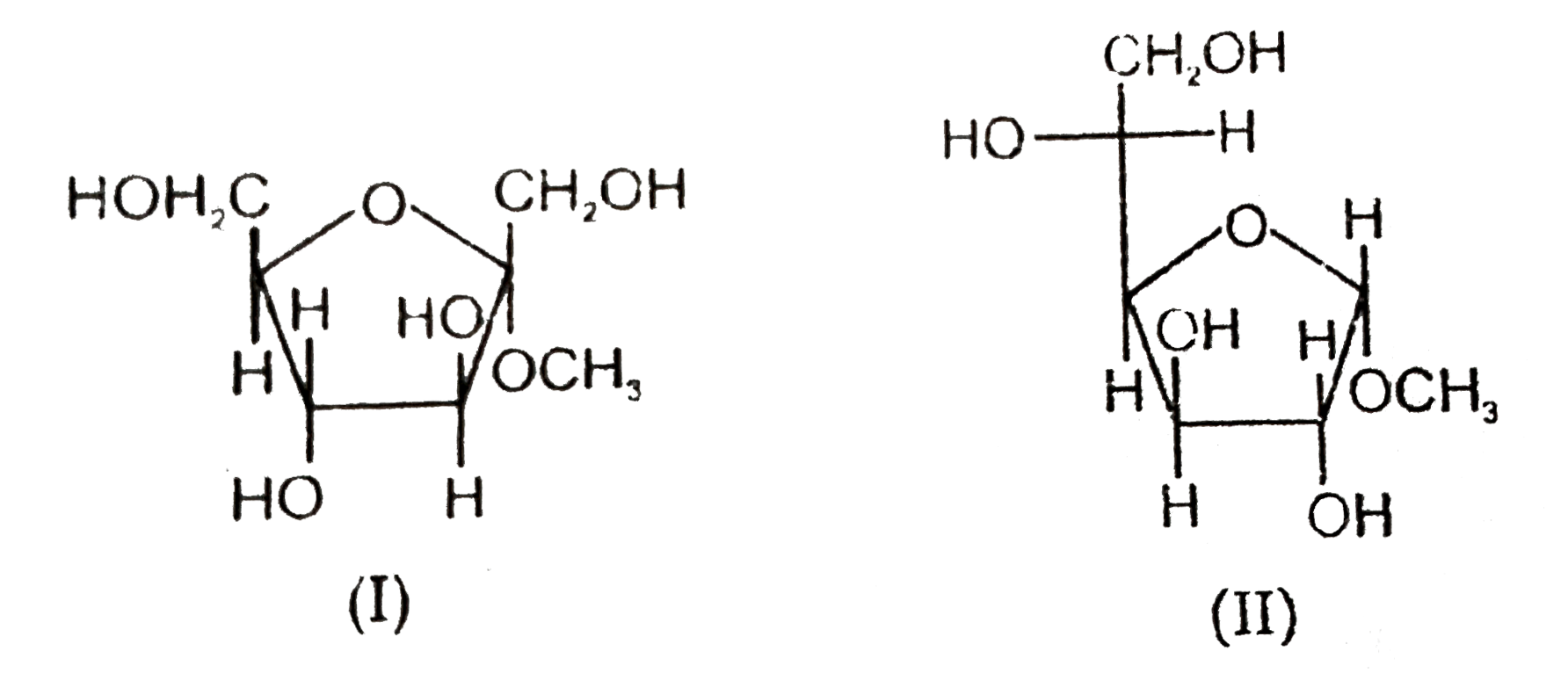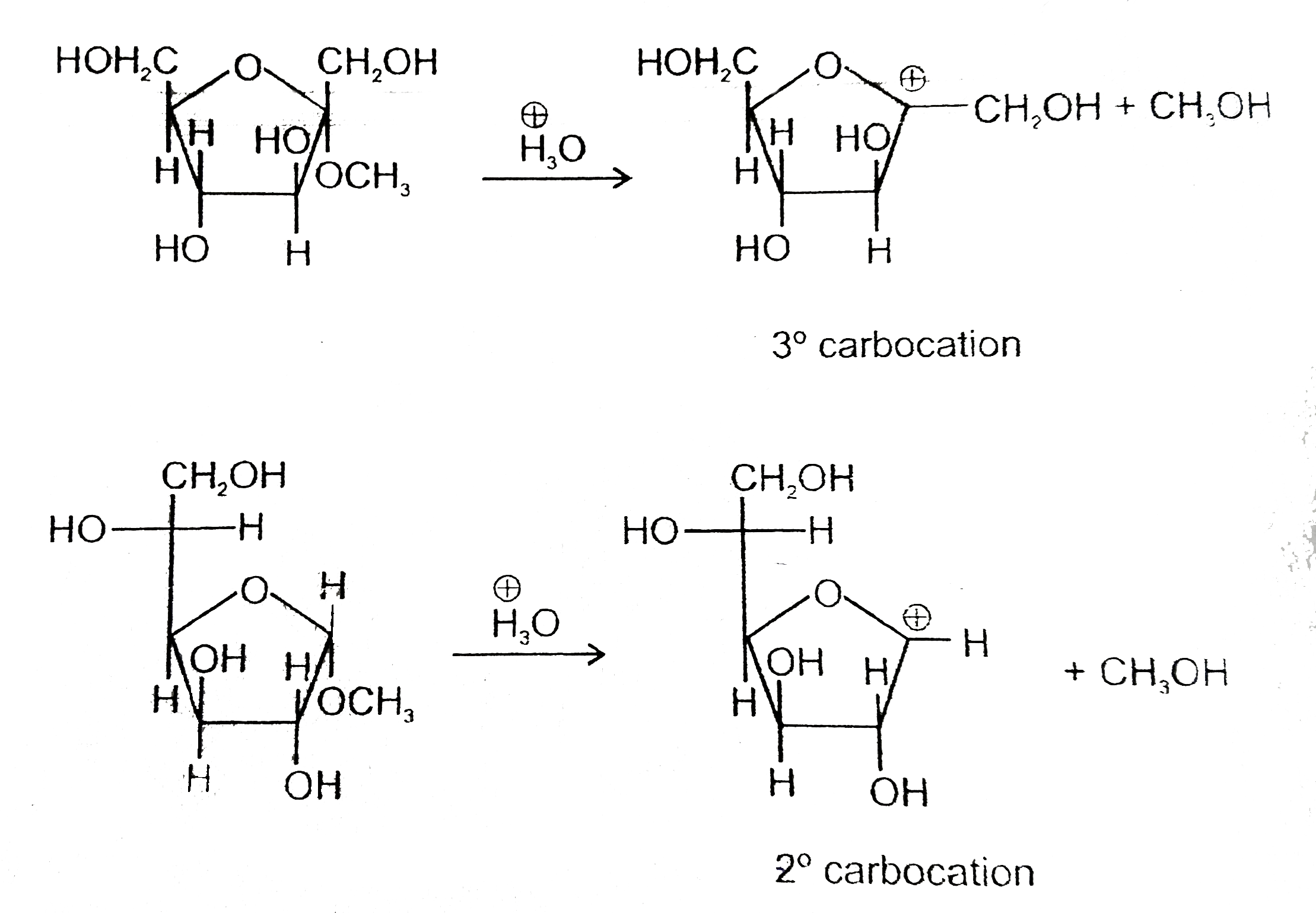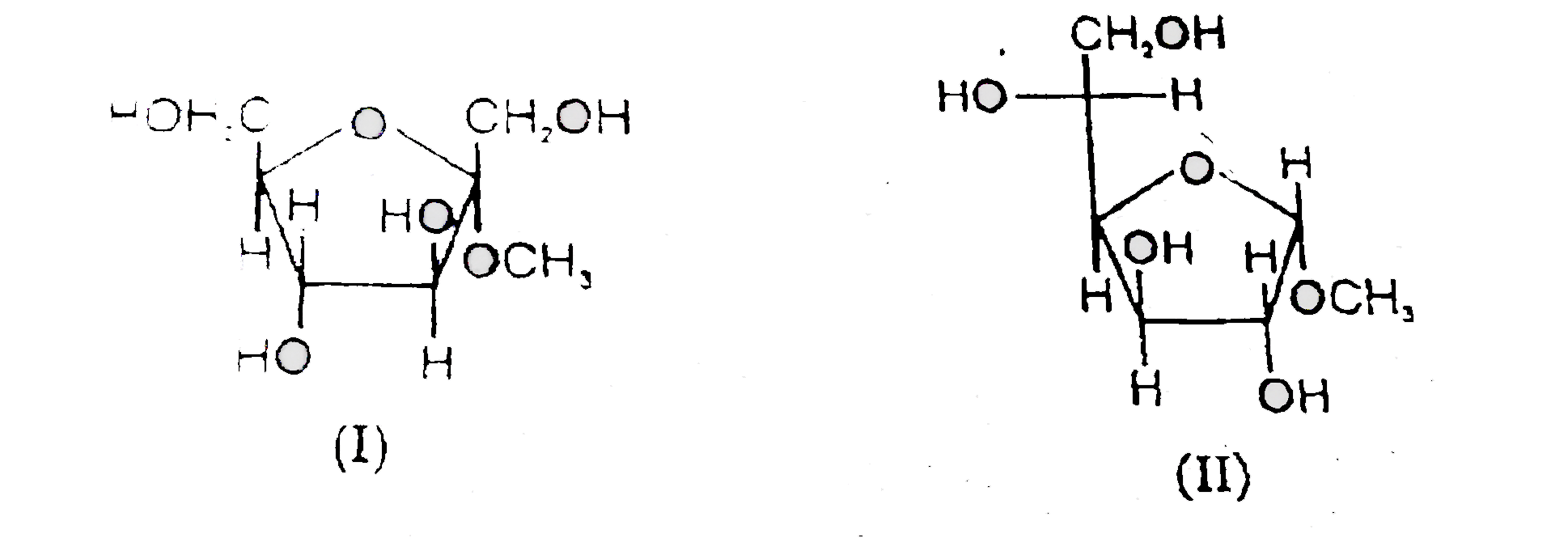Statement-1 : Methyl α−D-fructofuranoside (I) undergoes acid catalysed hydrolysis at faster rate than that of methyl α−D-glucofuranoside (II)
(I)
Statement-2 : The intermediate in glycoside hydrolysis is carbocation which 3∘ in case of I and 2∘ in case of (II).
STATEMENT-1 is true, STATEMENT-2 is true and STATEMENT-2 is correct explanation for STATEMENT-1
STATEMENT-1 is true, STATEMENT-2 is true and STATEMENT-2 is not correct explanation for STATEMENT-1
STATEMENT-1 is true, STATEMENT-2 is false
STATEMENT-1 is false, STATEMENT-2 is true
The correct Answer is:A
 .
.
Topper's Solved these Questions
- BOOK - RESONANCECHAPTER - BIOMOLECULESEXERCISE - Ex-2(Subjective)Part-I20videos
BIOMOLECULES
- BOOK - RESONANCECHAPTER - BIOMOLECULESEXERCISE - Ex-2(Single correct)Part-II17videos
BIOMOLECULES
- BOOK - RESONANCECHAPTER - BIOMOLECULESEXERCISE - Ex-1(sec-E)Part-II14videos
BIOMOLECULES
- BOOK - RESONANCECHAPTER - BASIC CONCEPTSEXERCISE - ORGANIC CHEMISTRY(BASIC CONCEPTS)27videos
BASIC CONCEPTS
- BOOK - RESONANCECHAPTER - BIOMOLECULES & POLYMEREXERCISE - ORGANIC CHEMISTRY(Biomolecules & Polymer)33videos
BIOMOLECULES & POLYMER
Similar Questions
Knowledge Check
- Question 1 - Select One
Statement-1:Methyl α-D-fructofuranoside (I) , undergoes acid catalysed hydrolysis at faster rate than that of methyl α-D-glucofuranoside (II).

Statement-2:The intermediate carbocation in case of I is more stable than in case of II.AStatement-1 is True, Statement-2 is True, Statement-2 is a correct explanation for Statement-1BStatement-1 is True, Statement-2 is True, Statement-2 is NOT a correct explanation for Statement-1CStatement-1 is True, Statement-2 is False.DStatement-1 is False, Statement-2 is True. - Question 2 - Select One
Statement-1: BCl3 and CCl4 do not undergo hydrolysis.
Statement-2: Both B and carbon do not have empty d-orbitals.AStatement-1 is true, statement-2 is true, statement-2 is a correct explanation for statement-1BStatement-1 is true, statement-2 is true, statement-2 is not correct explanation for statement-1CStatement-1 is true, statement-2 is falseDStatement-1 is false, statement-2 is true - Question 3 - Select One
Statement-1: Acid catalysed dehydration of t-butanol is faster than n-butanol.
Statement-2: The order of stability of carbocation is 3∘>2∘>1∘.AStatement-1 is True, Statement-2 is True, Statement-2 is a correct explanation for statement-9Bstatement-1 is true, statement-2 is true, statement-2 is NOT a correct explanation for statement-9Cstatement-1 is true, statement-2 is falseDstatement-1 is false, statement-2 is true
Statement-I: Acetic acid does not undergo haloform reaction.
Because
Statement-II: Acetic acid has no α hydrogen.View SolutionStatement-1:Acid catalysed hydrolysis of ester is reversible while base catalysed hydrolysis is irriversible .
Statement-2: In acid catalysed ester hydrolysis carboxylic acid is formed on which nucleophilic attack of alcohol is possible but in base catalysed ester hydrolysis carboxylate anion is formed on which nucleophilic attack is not possible.View SolutionStatement -I: Nitromethane can give aldol condensation.
Statement - II: alpha - hydrogen of nitromethane is acidic.View SolutionSTATEMENT-1: 2-Methyl-2-butene is the acid catalysed dehydration product of neopentyl alcohol.
and
STATEMENT-2: Neopentyl carbocation is the intermediate of the productView SolutionStatement I: Acetic acid does not undergo haloform reaction.
Statement II: Acetic acid has no alpha hydrogen.View Solution

